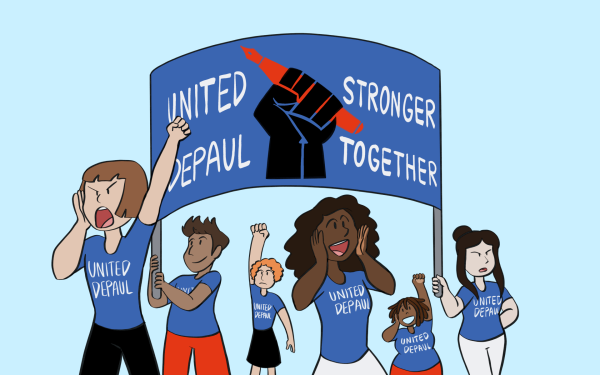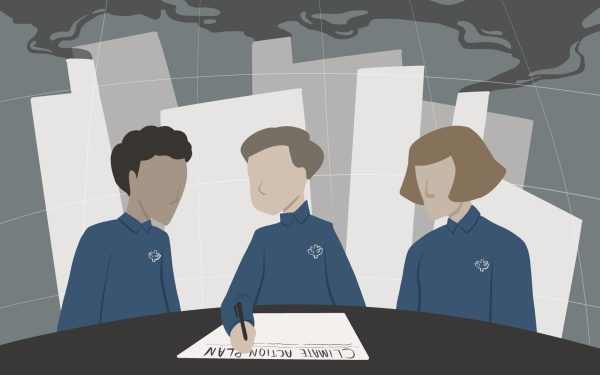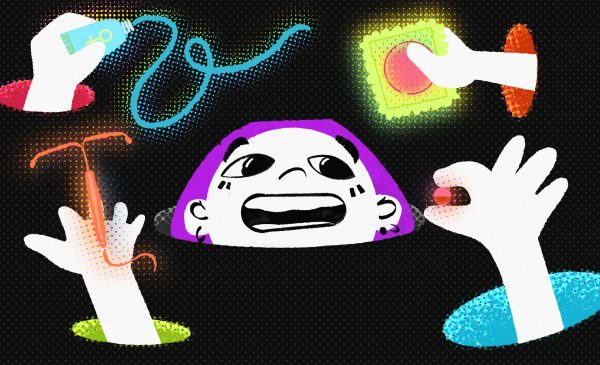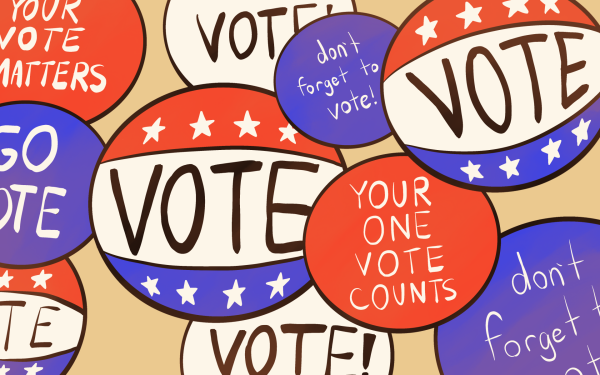Deep Games Lab builds video games to treat mental illness
(Marcus Yam/Los Angeles Times/TNS)
On the fifth floor of the Daley Center, Associate Professor Doris Rusch and her game design students in the Deep Games Lab toil away, trying to find new ways to use video games as a tool for good, defying the stereotype often ascribed to them that they are just a method for wasting time.
Rusch and her team of students focus mainly on designing video games that “explore the human experience” in a productive way.
But in order to effectively treat a mental illness, you must first understand the illness itself. In addition to doing her post-doctorate work at the Massachusetts Institute of Technology GAMBIT Game Lab and being full-time faculty, Rusch is enrolled in a master’s program for clinical mental health counseling at DePaul to better understand the illnesses she seeks to treat.
Past products of the Deep Games Lab include “Walking With,” in which two players, a nurse and a patient, collaboratively explore environments and complete puzzles. The game aims to teach mental health practitioners how to compassionately communicate with their patients.
A team is currently working on a game called “Of a Feather,” about two friends, one with bipolar disorder and one with borderline personality disorder, and their struggle to maintain their friendship. Cori Winter, one of the game’s designers, said the game was inspired by her own struggles with bipolar and her friend with borderline personality disorder.
“It’s a personal story of how our relationship developed,” Winter said. “She was my best friend for years, and when everything started to fall apart and these disorders got more intense, (I started to wonder) how the relationship would survive. It didn’t survive very well, let’s put it like that.”
In designing “Of a Feather,” Winter and one of her development partners, David Iacono, said they wanted to keep the thematic message of the game metaphorical rather than an explicit nod to the game being about coping with mental illness.
“Everyone can relate to having a close friend, but not everyone could relate to the feelings of having lost control, of not understanding what is going on in their own mind,” Winter said. “But everyone could understand losing a friend after moving away to college.”
When Iacono became a gaming student, he anticipated making traditional video games like Call of Duty, but instead became enraptured by the idea of using video games for spurring social good.
Designing a game that is fun and engaging, but also accomplishes the goal of treating mental health issues is like walking a tightrope, Rusch said.
“(It is difficult) to find the balance between making something that is appealing as a game and also really speaks to the heart of the issue you want the game to be about,” Rusch said.
Video games are experiencing a paradigm shift at the moment, moving closer every day towards full virtual reality gaming experiences.
As to how games can be useful in this application, Rusch said it can be a bit tricky.
“We get to make choices in games and own the consequences of these choices,” Rusch said. “Games facilitate exploring new ways of being and acting. All of that helps us get ‘unstuck.’ But once a game is done, it doesn’t really talk back. While it offers a possibility space, it’s still a space that is relatively fixed once its design is finished.”
She recognizes that video games will not be a cure-all for mental health problems. There are too many variables that still cannot be controlled, and thinks that there is no replacement for therapy.
“There is something to be said about the relationship that is built in therapy and being able to fully customize treatment to the (individual) needs of the patient,” Rusch said. “You can’t do that with a game that you design for a target audience, which is by definition more than one person.”
It may be difficult for someone who does not experience the same reality as their “target audience” to ease symptoms they’ve never experienced. She says you have to look deep and get out of your own head and into theirs to be effective.
“Very often, it’s all about getting as far away from the obvious as possible,” Rusch said. “What’s behind it all? What’s below the surface, invisible? I rely a lot on a mythical understanding of the world, finding archetypal patterns and energy, because they are what connect all of human experience.”
“But I also talk a lot to people with lived experience, subject matter experts, and I practice self-reflection and self-inquiry,” she continued. “I trust in the wisdom of stories and the power of storytelling.”












